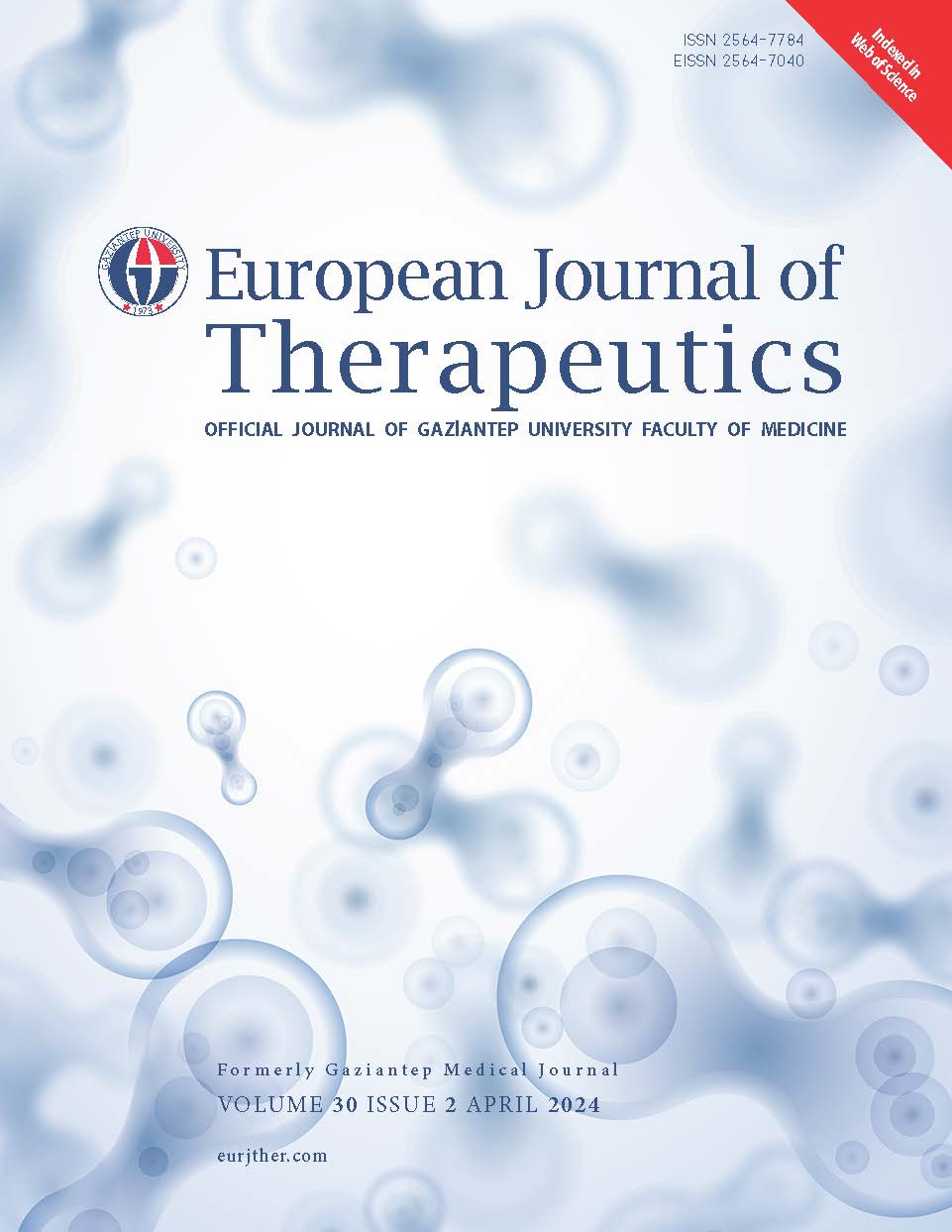Global Publication Trends and Research Hotspots of The Gastric Neuroendocrine Neoplasms: A Bibliometric Analysis of The Current Situation
DOI:
https://doi.org/10.58600/eurjther1957Keywords:
neuroendocrine neoplasms, bibliometric, publication trends, research hotspotsAbstract
Objective: Gastric neuroendocrine neoplasms (gNENs) are uncommon tumors, with growing understandings about the disease. Bibliometric analyzes have the advantage of visually depicting the dynamic evaluation of scientific knowledge of a specific topic. The aim of this study was to perform and report bibliometric analysis of gNENs, which was not formerly studied in the literature.
Methods: Articles published between 1980 and 2022 within the database of Web of Science Core Collection were included in this bibliometric analysis. Vosviewer package program and Datawrapper were used for bibliometric data interpretation.
Results: A total of 2270 articles about gNENs was detected with 63240 citations and an H index of 103. A remarkable increase was detected among the articles for years. Research have focused on gastroenterology and hepatology, endocrinology and metabolism, oncology, general medicine, pathology and surgery areas. Norwegian University of Science Technology was the leading institution about gNENs literature. Modlin IM, had the highest number of articles and citations among the authors. United States, Japan and Italy were the top three countries with the most published articles.
Conclusion: This bibliometric study provides an engrossing, insightful conclusion to the research and development trajectory in gNENs with a future perspective.
Metrics
References
Delle Fave G, O'Toole D, Sundin A, et al; Vienna Consensus Conference participants. (2016) ENETS Consensus Guidelines Update for Gastroduodenal Neuroendocrine Neoplasms. Neuroendocrinology 103: 119-124. https://doi.org/10.1159/000443168
Rindi G, Klimstra DS, Abedi-Ardekani B, et al. (2018) A common classification framework for neuroendocrine neoplasms: an International Agency for Research on Cancer (IARC) and World Health Organization (WHO) expert consensus proposal. Mod Pathol 31:1770-1786. https://doi.org/10.1038/s41379-018-0110-y
Köseoğlu H, Duzenli T, Sezikli M. (2021) Gastric neuroendocrine neoplasms: A review. World J Clin Cases 9:7973-7985. https://dx.doi.org/10.12998/wjcc.v9.i27.7973
Yang Z, Wang W, Lu J, et al. (2018) Gastric Neuroendocrine Tumors (G-Nets): Incidence, Prognosis and Recent Trend Toward Improved Survival. Cell Physiol Biochem 45:389-396. https://doi.org/10.1159/000486915
Hu P, Bai J, Liu M, et al. (2020) Trends of incidence and prognosis of gastric neuroendocrine neoplasms: a study based on SEER and our multicenter research. Gastric Cancer 23:591-599. https://doi.org/10.3390/cancers15082202
Rindi G, Luinetti O, Cornaggia M, et al. (1993) Three subtypes of gastric argyrophil carcinoid and the gastric neuroendocrine carcinoma: a clinicopathologic study. Gastroenterology 104:994-1006. https://doi.org/10.1016/0016-5085(93)90266-F
Ahmed M. (2020) Gastrointestinal neuroendocrine tumors in 2020. World J Gastrointest Oncol 12:791-807. https://dx.doi.org/10.4251/wjgo.v12.i8.791
Kunz PL, Reidy-Lagunes D, Anthony LB, et al; North American Neuroendocrine Tumor Society. (2013) Consensus guidelines for the management and treatment of neuroendocrine tumors. Pancreas 42:557-577. https://doi.org/10.1097/mpa.0b013e31828e34a4
Pritchard A. (1969). Statistical bibliography or bibliometrics? Journal of Documentation 25:348–349.
Hawkins DT (2001). Bibliometrics of electronic journals in information science. Information Research: An International Electronic Journal 7: 120.
Rousseau R. (2014). Library science: forgotten founder of bibliometrics. Nature 510:218. http://doi.org/10.1038/510218e
Kaya AE. (2023) Global scientific outputs of psychiatric malpractice publications: A bibliometric approach from 1980 to 2022. Journal of Contemporary Medicine 13:503-508. https://doi.org/10.16899/jcm.1275093
Kokol P, Blažun Vošner H, Završnik J. (2021) Application of bibliometrics in medicine: a historical bibliometrics analysis. Health Info Libr J 38(2):125-138. https://doi.org/10.1111/hir.12295
Van Eck N, Waltman L. (2010) Software survey: VOSviewer, a computer program for bibliometric mapping. Scientometrics 84:523-538. https://doi.org/10.1007/s11192-009-0146-3
World Bank. International Comparison Program database. https://data.worldbank.org/indicator/NY.GDP.MKTP.CD. Accessed 01.04.2023.
United Nations Development Programme. Human Development Report 2021-2022. https://hdr.undp.org/data-center/country-insights#/ranks. Accessed 01.04.2023.
Modlin IM, Lye KD, Kidd M. (2003) A 5-decade analysis of 13,715 carcinoid tumors. Cancer 97:934-959. https://doi.org/10.1002/cncr.11105
Donthu N, Kumar S, Mukherjee D, et al. (2021) How to conduct a bibliometric analysis: An overview and guidelines. Journal of Business Research 133:285-296. https://doi.org/10.1016/j.jbusres.2021.04.070
Patience GS, Patience CA, Blais B, et al. (2017) Citation analysis of scientific categories. Heliyon 3:e00300. https://doi.org/10.1016/j.heliyon.2017.e00300
Downloads
Published
How to Cite
Issue
Section
Categories
License
Copyright (c) 2024 European Journal of Therapeutics

This work is licensed under a Creative Commons Attribution-NonCommercial 4.0 International License.
The content of this journal is licensed under a Creative Commons Attribution-NonCommercial 4.0 International License.


















